Cheshire, devolution and the search for a name
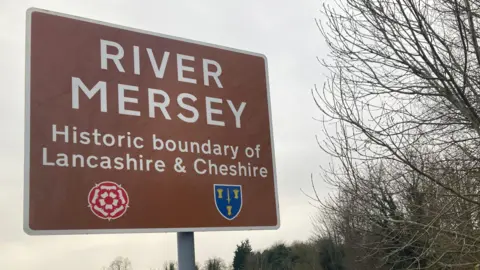 BBC
BBC"What's in a name? That which we call a rose, by any other name would smell as sweet," wrote William Shakespeare.
But names - especially place names - can be a point of contention for many. Take Cheshire, for example.
It is one of the country's oldest counties - even having its own version of the Magna Carta at one point - and politically it has seen various names and structures used to run it over the years.
Now, with devolution in the pipeline, there have been disagreements over what it should be called, but does it matter given that a deal could see the return of previously-used structures and names no longer used?
For much of the last thousand years, Cheshire has been run in a different way to its neighbours.
After the Norman Conquest in 1066, an earldom for Chester was created by William the Conqueror and over the next 150 years, "distinctive institutions had begun to emerge which set the county of Chester apart from other English shires", according to the National Archives.
The area also had its own version of the Magna Carta, when residents negotiated their own deal with Earl Ranulf de Blundeville.
By the late 13th Century, Cheshire began to be known as a county palatine - an area ruled by a hereditary noble - but despite the English Parliament being founded at about the same time, it was not until the rule of Henry VIII, in 1543, that the county and the city of Chester sent its first members.
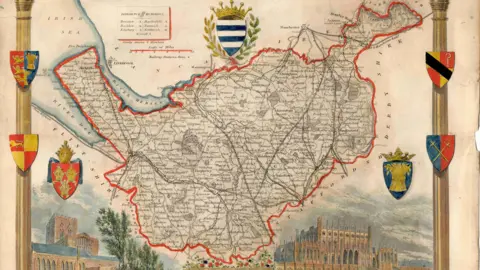 Wikicommons
WikicommonsIn his 1953 book The Earldom and County Palatine of Chester, historian Geoffrey Barraclough said this was "decisive" in bringing the county "into line" with the rest of the country.
He said all that remained of the county's former status were the palatine courts, which kept going until 1830, but he said this continuity was "formal rather than substantial".
His work also argued that Cheshire's status as a palatine was not beneficial to the area and that it "remained backwards and disorderly for upward of two centuries".
"The remarkable thing is how quickly it recovered and caught up with the rest of England, once the Tudors had established order," he said.
In reality, the definition and borders of what many people today still see as Cheshire come from the founding of Cheshire County Council in 1889.
The council area included parts of what are now Stockport and Tameside in Greater Manchester and Wirral on Merseyside, but what is now one of the county's biggest towns, Warrington, was not included, being instead placed in Lancashire until changes almost 100 years later.
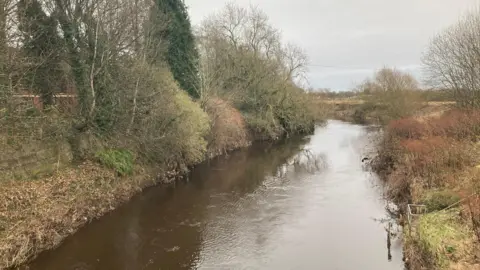
The University of Liverpool's Prof Stuart Wilks-Heeg said Cheshire's borders have historically been defined by its natural ones.
"One of them is Wales, that's pretty fixed, and the other is the Mersey," the politics professor said.
"For a lot of people, the Mersey is the boundary between Cheshire and Lancashire and you can see why historically that would work.
"But the Mersey has been the source of the major growth, and that development along that river changes everything."
In 1969, the Redcliffe-Maud review recommended the abolition of most councils and creating new unitary authorities and metropolitan areas.
These included South East Lancashire/North East Cheshire, known as SELNEC, which would have included Greater Manchester and parts of Cheshire that were either already in the county boundaries, such as Northwich and Macclesfield, or had previously been, such as Altrincham.
It also recommended moving Warrington into the county, while Chester and Ellesmere Port would have been included in Merseyside, and areas such as Congleton and Crewe would have been put in Stoke and North Staffordshire.
However, a change in government led to a further white paper, which led to the 1974 local government reorganisation and another route was taken, leaving the likes of the five-year-old SELNEC transport executive out of the frame and in need of replacement.
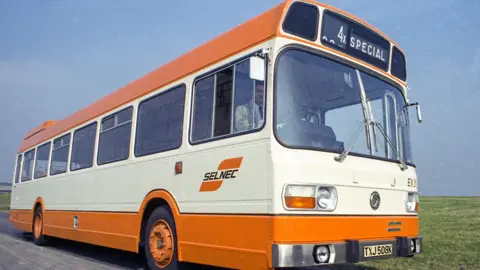 Museum of Transport, Greater Manchester
Museum of Transport, Greater ManchesterFor many areas, it was changes that came into force in 1974 that led to the most significant changes of the map.
In Cheshire, Wirral was transferred to Merseyside, eastern parts of the county to Greater Manchester and Derbyshire, with Warrington coming within its new boundaries.
Three decades later, Warrington moved again in political terms and, along with neighbouring Halton, became a unitary authority.
But changes in 2009 were, as Prof Wilks-Heeg put it, "the big one".
Cheshire County Council was abolished and replaced with two unitary authorities - Cheshire East Council and Cheshire West and Chester Council.
"That's a fundamental division of everything else that's left and that historic county, it exists as a kind of notional entity but it doesn't exist as a unit of political geography," he said.
"Inevitably, that upsets some people, because they have a tie to those historic counties, but that's just been part of the logic of local government reorganisation since the 1990s that we're getting rid of counties."
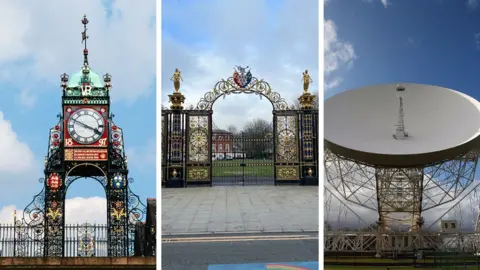 BBC/Getty Images
BBC/Getty ImagesWith devolution now looking to bring Cheshire West and Chester, Cheshire East and Warrington under one combined authority, is devolution almost going back full circle?
"In a way, yes, but not quite," Prof Wilks-Heeg said.
"It's very similar to the geography of 1974.
"It's also creating a two-tier system again because we've got the combined authorities as the upper tier and then we have the unitary authorities as the second tier.
"So it's kind of going back full circle, but some things have changed."
He said that disagreements over the name of the combined authority, which have seen Conservatives on Cheshire West and Chester Council call for Warrington to be dropped and the name Cheshire alone to be used, were interesting.
"Compared to 1974, Warrington is now such a bigger and more important beast economically than it was in 1974," he said.
"So Warrington's going to want its name in there and some people are going to say 'oh no, it must only be called Cheshire'."
He added that the devolution proposals "make sense in the context of what's already happened".
"We've been doing this piecemeal, so the 1974 organisation was an attempt to redraw the entire map at the same time," he said.
"And that meant creating some strange units, so most people were quite happy with Cheshire County Council or Lancashire County Council but it also created new places called things like Humberside or Avon and nobody ever really loved those.
"So what we've had since the 1990s is redrawing bit-by-bit, trying to take a case-by-case basis in different locations.
"Where the 1974 geography looks like the obvious way to go, that's where they've gone and I think that's what's happening here."
With devolution discussions with the county ongoing, the chosen name and what it could mean for the area will continue to be a point of discussion.
Why not follow BBC North West on X? For more local politics coverage, BBC Politics North West is on BBC One on Sunday at 10:00am and on BBC iPlayer. You can also send story ideas to [email protected]
